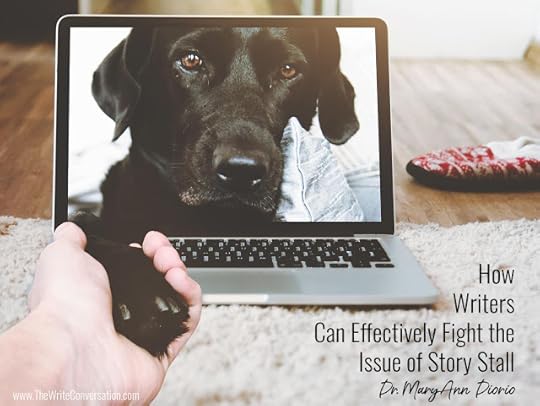Edie Melson's Blog, page 117
August 13, 2022
Searching for Guilt

by Martin Wiles @LinesFromGod
“In those days, at that time,” declares the Lord, “search will be made for Israel’s guilt, but there will be none, and for the sins of Judah, but none will be found.” Jeremiah 50:20 NIV
I once searched for snakes…poisonous ones.
Why searching for snakes as a teenager intrigued me, I’m not sure. Perhaps I wanted to brag to my peers about my dangerous missions. Acceptance, you know. That thing we all look for from the earliest of ages. I certainly didn’t want to find a poisonous snake. I was actually a little scared of snakes. At least, if they saw me before I saw them.
So, a friend—who was as crazy as I was—and I donned our loose-fitting clothes and boots, shouldered our guns, and set off for swamps and other areas where we likely would encounter those slithering serpents. Fortunately, we never found any, although I have found a number of them when I wasn’t looking. My searches proved fruitless.
I also remember the time when, as a young lad, I bounced three rubber bouncy balls in my grandmother’s house. The kind once sold from gumball machines that normally perched near the exit of grocery and retail stores. The kind that would catch a young fella’s eye, making him tug at a grandparent’s trouser leg or shirt sleeve and beg for a penny or a nickel which he would then insert into a slot, turn the knob, and relish over what came out. And I bounced all those balls simultaneously and watched them scatter in different directions. I searched my grandparents’ home for days but never found them.
And then there was my next-to-the-oldest grandson’s fedora. He loved wearing one like his Pop. But somehow, he misplaced it. We searched our house; our daughter searched hers. Nothing. Not until I took the bed apart one day to erect a new bed frame did I find it nestled under the bed. I placed it on one of the headboard poles, knowing he would get it the next time he came. By this time, he had moved eleven hours away to another state. Sure enough, when he visited, he went immediately to the room and snatched up his hat. His search was successful.
Jeremiah wrote to God’s people who at the time lived in Babylonian captivity—far away from their native land. He told them of a day when they would return to their promised land. And when they did, they wouldn’t disobey God anymore. They would have learned their lesson. A search would be made for their guilt, but it would not be discovered.
One thing I’ve found numerous times is guilt. The thing I feel when I’ve done, said, or thought something I shouldn’t have. Something God has forbidden. But although I’ve found it, I don’t live with it. Feeling guilty over an action or a wrongly spoken word and living with guilt constitute two different things.
Jeremiah’s good news for Israel is good news for everyone. God has provided the means by which our state of guilt can be removed. Jesus paid for our sins on Calvary’s cross—past, present, and future. When we accept His payment and ask for His forgiveness, we no longer must live in a state of guilt. He removes our condemnation and clothes us in His righteousness.
Others may reject us, but we no longer have to search for acceptance. God receives us into His family and calls us His children and friends.
Don’t search for or live with guilt any longer. In Christ, you are accepted and loved.
TWEETABLESearching for Guilt, insight from author Martin Wiles, @LinesFromGod on @EdieMelson (Click to Tweet)
 Martin Wiles is the founder of Love Lines from God (www.lovelinesfromgod.com) and serves as Managing Editor for Christian Devotions, Senior Editor for Inspire a Fire, and Proof Editor for Courier Publishing. He has authored six books and has been published in numerous publications. His most recent book, DON'T JUST LIVE...REALLY LIVE, debuted in October of 2021. He is a freelance editor, English teacher, author, and pastor.
Martin Wiles is the founder of Love Lines from God (www.lovelinesfromgod.com) and serves as Managing Editor for Christian Devotions, Senior Editor for Inspire a Fire, and Proof Editor for Courier Publishing. He has authored six books and has been published in numerous publications. His most recent book, DON'T JUST LIVE...REALLY LIVE, debuted in October of 2021. He is a freelance editor, English teacher, author, and pastor.
Published on August 13, 2022 22:00
August 12, 2022
Things for Writers to Remember When Others Cause You to Doubt

by Beth K. Vogt @BethVogt
Earlier this week, I was watching “American Ninja Warrior” (ANW), which is a Monday night tradition in the Vogt household. Yes, I know I may have mentioned my love of ANW in other posts. During the commercial breaks, I stared at a blank Word document and mulled over this blog post.
And then this happened:
Christopher Harding Jones, a.k.a. the “Living Wide Warrior,” came up to take his run on the semifinal’s obstacle course. This teenager lives by the motto, “Living Wide,” which his dad also lived by after being diagnosed with cancer. Given only a few months to live, his dad lived for four more years. As the motto indicates, “You can’t control the length of your life, but you can control the width.”
Before Jones’ run, a video story detailed that he has sensory processing disorder, which can cause a person to have poor balance or poor spatial orientation. The video also showed how Jones’ dad built an entire ANW course in the family’s backyard. Becoming involved with ANW helped his son gain confidence and athletic coordination.
After the video, Jones proceeded to be the night’s first competitor to conquer the 10 obstacles on the course and hit the buzzer.
And that’s when Akbar Gbajabiamila, one of the ANW hosts, looked right into the TV camera and said this: “Don’t let anybody tell you that you can’t do something.”
And that is the point of this entire blog post.Did a teacher tell you that you can’t write?Did an acquaintance tell you writing is a waste of your time? Did a family member tell you to get a real job?Did you tell yourself that you’re failing at this writing gig?
Read these words again, writing friends: Don’t let anybody tell you that you can’t do something.
Let’s be honest. Creativity is hard work with its play clothes on.
Accept that reality and then ignore the naysayers and get to work. But don’t let anybody tell you that you can’t do something—and that includes you!
TWEETABLEThings for Writers to Remember When Others Cause You to Doubt, insight from author @BethVogt on @EdieMelson (Click to Tweet)
 Beth K. Vogt believes God’s best often waits behind the doors marked “Never.” Having authored nine contemporary romance novels and novellas, The Best We’ve Been, the final book in Beth’s Thatcher Sisters Series with Tyndale House Publishers, releasers May 2020. Other books in the women’s fiction series include Things I Never Told You, which won the 2019 AWSA Award for Contemporary Novel of the Year, and Moments We Forget. Beth is a 2016 Christy Award winner, a 2016 ACFW Carol Award winner, and a 2015 RITA® finalist. An established magazine writer and former editor of the leadership magazine for MOPS International, Beth blogs for Learn How to Write a Novel and The Write Conversation and also enjoys speaking to writers group and mentoring other writers. Visit Beth at bethvogt.com.
Beth K. Vogt believes God’s best often waits behind the doors marked “Never.” Having authored nine contemporary romance novels and novellas, The Best We’ve Been, the final book in Beth’s Thatcher Sisters Series with Tyndale House Publishers, releasers May 2020. Other books in the women’s fiction series include Things I Never Told You, which won the 2019 AWSA Award for Contemporary Novel of the Year, and Moments We Forget. Beth is a 2016 Christy Award winner, a 2016 ACFW Carol Award winner, and a 2015 RITA® finalist. An established magazine writer and former editor of the leadership magazine for MOPS International, Beth blogs for Learn How to Write a Novel and The Write Conversation and also enjoys speaking to writers group and mentoring other writers. Visit Beth at bethvogt.com.
Published on August 12, 2022 22:00
August 11, 2022
How Writers Can Effectively Fight the Issue of Story Stall

by MaryAnn Diorio @DrMaryAnnDiorio
If you've been writing fiction for any length of time, you have very likely experienced what I call "Story Stall." What is story stall? Besides being a tongue-twister :), story stall is a stop in the forward motion of your story while you are writing it. It is the point in your story where you get stuck and cannot move forward. Some people call this writer's block. In my opinion, story stall—like writer's block—is, at its root, nothing more than the symptom of a story problem.
Most, if not all, writers experience story stall at one time or another. But when we do, it is not a reason to fear. It is a reason to re-evaluate.
When you get stuck in the writing of your story, your subconscious is trying to tell you there's a problem and that you need to stop and take care of it before the problem worsens.
So, what can we do to overcome story stall?
1. Pay attention to it. Consider story stall a signal, like pain, that is warning you of a problem that needs to be addressed. Ignoring story stall will not make the problem go away. On the contrary, it will only exacerbate it.
2. Re-evaluate your character's goal and motivation. Usually, when we are stuck in a story, the reason is that we do not know our character well enough. We may not be clear on our character's goal or motivation. Or we may not have discovered the lie our character believes. Or we may not have dug deeply enough into our character's soul to discover his worst fear or his greatest dream. When we don't know our characters well, we don't know how they will react or respond to situations in our story. Hence, we get stuck. Our story stalls.
So, we can ask ourselves the following questions when re-evaluating our character:What does my character really want? Why does she want it?What fear keeps her from getting what she wants?What lie does he believe that is hindering him from achieving his goal? What change does she have to make to get what she wants?How can I, as the author, best create a logical sequence of cause-and-effect events to ensure that my character's growth arc is realistic and that my story moves forward in a psychologically satisfying way?3. Is your character's motivation congruent with your plot? For example, your plot may require that your character engage in a certain activity, but that activity is not something your character would engage in. Your subconscious mind knows this and will not allow you to violate logic by taking your character in that direction. So, your story stalls, warning you that you need to make your character's motivation congruent with your plot.
At the same time, if your character does something "out of character," that very action could provide a surprise twist in your story, thereby revealing an even deeper aspect of your character that will intrigue your reader. The important thing to remember is always to maintain the cause-and-effect logic of your story. Doing so fortifies the credibility of your story and preserves your reader's trust.
4. Is your choice of setting the right one for your story? Your choice of tense? Your choice of person? Sometimes the setting, the tense, or the person is the culprit in story stall. For example, I may set my story in the wilds of Africa when its true home is the mountains of Brazil. Or I may write my story in third person when first person best fits the story. Or I may write my story in past tense when present tense is the tense that resonates most.
Bottom LineThere is a cure for story stall. That cure is getting to know your characters as intimately as you can and then trusting God to guide you as you create the story of His heart.
TWEETABLEHow Writers Can Effectively Fight the Issue of Story Stall, tips from @DrMaryAnnDiorio on @EdieMelson (Click to Tweet)
 MaryAnn Diorio writes riveting fiction from a small, quaint Victorian town in southern New Jersey where the neighbors still stop to chat while walking their dogs, the houses still sport wide, wrap-around front porches, and the charming downtown still finds kids licking lollipops and old married couples holding hands. A true Jersey girl, MaryAnn is a big fan of Jersey diners, Jersey tomatoes, and the Jersey shore. You can learn more about MaryAnn at maryanndiorio.com.
MaryAnn Diorio writes riveting fiction from a small, quaint Victorian town in southern New Jersey where the neighbors still stop to chat while walking their dogs, the houses still sport wide, wrap-around front porches, and the charming downtown still finds kids licking lollipops and old married couples holding hands. A true Jersey girl, MaryAnn is a big fan of Jersey diners, Jersey tomatoes, and the Jersey shore. You can learn more about MaryAnn at maryanndiorio.com.
Published on August 11, 2022 22:00
August 10, 2022
Why Writers Should Revisit Their College Years to Market Their Latest Book

by Julie Lavender @JLavenderWrites
Whether you moved the tassel a handful of years ago or a handful of decades ago, tapping into your alma mater is a great place to market a new release. It’s a little outside of the box – and don’t all universities encourage outside-of-the-box learning strategies while seeking that diploma? And one that will help you reach fresh audiences to get the word out about your newest book publication.
Here are some of the opportunities I checked out from my university, and I’m sure your college has similar offerings.
1. Alumni Magazine
Georgia Southern Magazine, published three times a year for “alumni and friends of Georgia Southern University,” loves to include the accomplishments of former students. Often, the marketing folks that do the magazine include these accomplishments in the form of a feature article about the accomplishment. Sometimes, they have round-up articles by degree or other specialties. And, in every issue, a “Chronicles” section near the back of the magazine contains brief, one- to three-sentence blurbs about a former student’s accomplishment, listed by graduation date and submitted by the alumni.
Also frequently spotted in the magazine is an article entitled, “40 Under 40.” Peruse your alumni magazine to see if a similar article is published regularly and submit your name for the article.
2. Specific Degree Newsletter
As a graduate of the education department at Georgia Southern University, specifically the “College of Education,” or COE, I subscribe to COE’s Southern Educator newsletter. The newsletters come monthly to my inbox with tidbits of news about the department, professors, related happenings, and sometimes, accolades for former graduates.
Most college instructors and professors are encouraged to frequently submit papers for publication. Thus, graduates who achieve publication are often recognized and lauded.
3. Degree-related Sorority/Fraternity
Recently, a church friend who knows I’m a former teacher and current writer asked me to speak at the monthly meeting of Alpha Delta Kappa, an “International Honorary Organization for Women Educators.” She asked me to share my writing journey with the group of female educators, whose mantra states the members are “hope builders and difference makers.” I’m excited to speak to the group in November, and her invitation prompted me to check into other educational sororities or groups in my area and beyond.
4. Major/Minor Classroom Settings
Reach out to former professors and let them know you’re available as a guest speaker for a class session. Though you might not necessarily sell books to college students—I mean, after all—they’re struggling to pay for and read all the books assigned for each class anyway—you just might find that you’re featured in a college announcement, email blast, or the alumni magazine mentioned above.
And, if your college is in another location from where you currently live, you just might get a newspaper article written about the event that would lead to greater awareness about your recent release. Especially if you reach out to the newspaper on your own to let them know you’re available for an interview following the university visit to speak in a classroom.
5. Sorority/Fraternity Publications
As an initiated Chi Omega during my time at Georgia Southern Magazine, I regularly enjoy social media posts on a Chi-O alumni page, as well as other updates from the national organization. Sharing the release of a new book with the group can have a far-reaching impact, not just with fellow GSU Chi Omega members, but those across the United States. Sororities and fraternities, like many organizations, like to support their own, and often purchases will be made just to show that support.
6. Newspaper Lifestyle Article
And, speaking of newspaper articles, newspapers in college-town settings love to include updates from “former locals” who spent their college years in a community. Submit an article about your newest release to the editor of the newspaper in your college town or email the lifestyles editor and let them know you’re available for an interview. It’s helpful if you mention ways that you were involved in the community before, like church membership or any other organizations (especially service ones), just to let the editor know that many in the community could recognize your name and enjoy reading about you.
Step back into the college scene, albeit briefly, to help market your newest book release. After all, you spent a lot of time, money, and effort getting that college degree. Let it continue to serve you well by revisiting your area of study to bring about awareness of that new book to unique audiences that you might not reach otherwise.
Now it’s your turn! What have I left out? What opportunities have you tapped into from your college or university days to help market your newest release?
TWEETABLEWhy Writers Should Revisit Their College Years to Market Their Latest Book, tips from @JLavenderWrites on @EdieMelson (Click to Tweet)
 Julie Lavender spent six years at Georgia Southern University and proudly came away with an undergraduate degree and a Masters Degree in Early Childhood Education. GO EAGLES! She’s the author of Children’s Bible Stories for Bedtime (Zeitgeist/Penguin Random House) and 365 Ways to Love Your Child: Turning Little Moments into Lasting Memories (Revell). She’s also a contributor to The Seven, a podcast sharing life events with six other writer friends to ignite and encourage listeners on their faith journey
Julie Lavender spent six years at Georgia Southern University and proudly came away with an undergraduate degree and a Masters Degree in Early Childhood Education. GO EAGLES! She’s the author of Children’s Bible Stories for Bedtime (Zeitgeist/Penguin Random House) and 365 Ways to Love Your Child: Turning Little Moments into Lasting Memories (Revell). She’s also a contributor to The Seven, a podcast sharing life events with six other writer friends to ignite and encourage listeners on their faith journey
Published on August 10, 2022 22:00
August 9, 2022
Reasons a Writer Needs to Start Thinking about the Holidays Now

by Linda Gilden @LindaGilden
Even though it is just the end of the summer, it’s a great time to gather your holiday thoughts for your writing projects.
Most magazines begin several months ahead if not more. So this month would be a good time to make your list of possible article ideas for this year’s holiday season.
Thanksgiving articles are especially welcome. As authors, some of us tend to skip that holiday because it seems Christmas articles might be more desirable. But most magazines, both print and online, love to have a new, fresh Thanksgiving article to share with their readers. In order to have the greatest chance of success with submissions, try to think of a new angle to approach the holiday. In other words, instead of writing “How the Pilgrims got to America,” why not research and profile one of the most influential travelers on the Mayflower. Or instead of writing about “The First Thanksgiving Menu,” write about a current menu. “A Menu for all Ages,” and include Thanksgiving favorites to all ages.
Christmas articles can follow the same rule—find a fresh and new approach to share with your readers. Perhaps you could find a jolly fellow who plays Santa every year and one year a special child pointed him to God and changed his life. Or instead of writing “My Favorite Christmas Present Ever” you could write “The Best Christmas Gift You can Give.” Or compile a list that gives your reader a sampling of gifts that will change your life in a positive way. This might include gifts of time or special words. If you want to make your article interesting to a larger group of people, use the round up format and ask one Christmas-related question to five or six celebrities or others. Make sure to vary the demographics of those you ask. Maybe you have a favorite Christmas article you have saved for years or a Christmas poem and your article could be about why it meant so much to you.
Ideas abound and often come to mind when you are least expecting them. But if you put on some Christmas music, set a decoration or two beside your computer, and let your idea stream run through your mind, in no time you will have a great list of ideas from which to write holiday articles.
Whatever your idea, these are special times that can point readers to think about God’s provision. Holiday articles are a great starting place for writing articles because everyone celebrates in unique and special ways.
Whatever your focus for this year’s holidays, be sure to share it with others. And Happy Thanksgiving! And Merry Christmas!
TWEETABLEReasons a Writer Needs to Start Thinking about the Holidays Now, insight from @LindaGilden on @EdieMelson (Click to Tweet)
 Linda Gilden has coauthored 11 books with 5 different coauthors and has #12 and #13 coming out in 2022, adding a new co-author to the list. She loves every one of her coauthors and enjoys collaborating on interesting projects with them. She also has written many books on her own and realizes what a treasure and blessing a good co-author is.
Linda Gilden has coauthored 11 books with 5 different coauthors and has #12 and #13 coming out in 2022, adding a new co-author to the list. She loves every one of her coauthors and enjoys collaborating on interesting projects with them. She also has written many books on her own and realizes what a treasure and blessing a good co-author is.Featured Image: Photo by Danil Aksenov on Unsplash
Published on August 09, 2022 22:00
August 8, 2022
Discover What You Need to Write Dialect that Shines True

by Cindy Sproles @CindyDevoted
Everyone is known for something, and me—well, it's my mountain dialect. I learned years ago that when you hail from the mountains of East Tennessee, folks are going to rag you about your accent. I decided to roll with it.
The dialect makes me who I am, which is not such a bad thing. For me to translate that dialect into viable dialogue took a little practice. There were some things I had to come to grips with, like the cultural differences across the country. It was wrong to simply assume everyone understood the concept of going "across the gap"—something so second nature to me in both doing and speaking became a stumbling block for those above the Mason-Dixon.
As much as I love my mountain heritage and dialect, in order for it to come across as both understandable and realistic, I had to put the brakes on from time to time. Learning to write the dialogue and dialect that you speak requires thought. Follow these tips to help you pen amazing dialect in your dialogue.
Tips to Write Effective Dialect
1. Remember, everyone doesn't know your culture: Whether you are from the mountains of upper East Tennessee or the western United States, culture plays a heavy part in the dialect of the area. Just because you understand a particular phrase or unique word doesn't mean your readers will. For example: When I lived in a small town just outside of Charleston, S.C., I didn't understand the culture of those born and bred in the deep south. So, when a kind gentleman in our church asked if he could tote me home, I was taken back. Tote was a bag (I know, even in the mountains of Tennessee). It didn't make sense. What he was asking was could he drive me home. I'd never had anyone offer to "tote" me home before. All I could imagine was someone stuffing me into a brown paper bag, which certainly couldn't end well. Before you write geographically cultural phrases, think about:1) the importance of that word choice to the story 2) consider offering some insight to the reader with a follow-up phrase to help them clarify.
As an editor, I ran across a lady from upper Pennsylvania who described a bicycle in a very unique way. I ran it past four editor friends, none of whom had heard of the phrase. When I asked her to remove it or change it up, so the average reader understood, she hit the ceiling. To her, that was correct. Everyone should understand it, but that's not how things are. Be flexible with your cultural phrases and help clarify or offer a way to understand the sentences around the phrase.
2. Spellin' Ain't All It's Cut Out to Be: I can throw myself under the bus since I'm writing this post. As a writer of Appalachian Historical, dialect is everything to bring a certain realistic tone into the story. But you have to be wise.
Editors wanted to leave off the ing in my mountain words, i.e., seein, hearin, tastin. And that was fine, but their editing minds sooo wanted the apostrophe at the end of the word. Seein', hearin', talkin', hurtin'. It didn't take long for them to realize all those little apostrophes grew insanely annoying, so they returned to my original way of writing the word—without the apostrophe.
A second thing that came into play with this lazy way of talking was that if there was a more educated character in the scene, how did we allow them to talk? We let them use the ing on their words to denote a more educated person. Sounds easy. No, it meant the writer had to pay attention and craft the scenes appropriately, and when there is a dialogue between the two, know when to use the ing and when not.
3. Overuse of those lazy words: again, this goes back to being particular about what to use in dialect or not. Sometimes we opt to use lazy words in the dialogue, but in internal dialogue, we mix it up. This helps the reader fully understand the use of the dialect without running it into the ground.
4. Don't allow your dialect and dialogue to make your characters stupid: At least not unless they are supposed to be. You can have an uneducated individual who carries on perfectly normal conversation. Just because they have a certain dialect or accent doesn't a stupid character make. Pay attention to the details and write reality, not stupidity. Some of my wisest characters have the deepest accents and unique phrases. Make their dialogue raise their personality, not lower it.
And with that, I share a fast story. A few years back, two women walked in discussing accents while in the restroom at a conference. Their accents were very mid-western, and apparently, to these two ladies, that was the perfect accent - unless it was British. There was a conferee there with a deep British accent; to these ladies, it was beautiful. Then there was that hillbilly who just sounded stupid (that hillbilly was me, and I was called by name). I'm proud of my mountain heritage, and after talking to a male faculty peer and asking him if my accent made me appear stupid, he was dumbfounded. "Your accent makes you approachable. And when you write your accent, phrases, and lingo, your readers feel like they're wrapped in a warm mountain blanket."
I don’t tell you this to draw sympathy, but to show you how dialect affects others. This proves the importance of writing your characters with the right dialect. Write it as you speak it. Don't force it. When you force it, your readers notice immediately. I find that writers often overwrite dialogue and dialect trying to drive home a point. Instead of driving home the point, they drive away the reader.
Study dialogue and dialect. Pay attention to how folks speak. Do your homework. Nothing drives a reader away faster than bad dialogue. Craft your phrases carefully and if there is a word or phrase that stumps the reader—take it out.
Writing is a true craft, and each part is vital to the success of a good story. I can't say it enough—learn the craft, and your stories will sing.
One last word of advice—never assume the restroom is empty.
TWEETABLEDiscover What You Need to Write Dialect that Shines True, tips from author @CindyDevoted on @EdieMelson (Click to Tweet)
 Cindy K. Sproles is an author, speaker, and conference teacher. She is the cofounder of Christian Devotions Ministries and the executive editor for www.christiandevotions.us and www.inspireafire.com. Cindy is the lead managing editor for SonRise Devotionals and also Straight Street Books, both imprints of LPC/Iron Stream Media Publications. She is a mentor with Write Right and the director of the Asheville Christian Writers Conference held each February at the Billy Graham Training Center, the Cove, Asheville, NC. Cindy is a best selling, award winning novelist. Visit Cindy at www.cindysproles.com.
Cindy K. Sproles is an author, speaker, and conference teacher. She is the cofounder of Christian Devotions Ministries and the executive editor for www.christiandevotions.us and www.inspireafire.com. Cindy is the lead managing editor for SonRise Devotionals and also Straight Street Books, both imprints of LPC/Iron Stream Media Publications. She is a mentor with Write Right and the director of the Asheville Christian Writers Conference held each February at the Billy Graham Training Center, the Cove, Asheville, NC. Cindy is a best selling, award winning novelist. Visit Cindy at www.cindysproles.com.Featured Image: Photo by Ayla Verschueren on Unsplash
Published on August 08, 2022 22:00
August 7, 2022
Props for Writers to Use When Speaking

by Linda Goldfarb @LindaGoldfarb
Well-placed props can differentiate between an excellent talk and a life-changing experience. My first professional coach, Dwight Bain, is a prop master. Whether it’s a rubber band ball, a take-apart brain, or a simple piece of fruit, Dwight memorably drives home his point. I learned from the best.
On Stage, Props Make Your Presentation Pop
These props set the stage to provide your best presentation Table: a well-placed table can display a visual openly as in a book or stationary prop. You can also veil an item under a black cloth to reveal it at just the right moment to build a sense of anticipation within your audience.Chair: a high back table height chair or sturdy stool can position you as a relaxed yet confident speaker.Couch: a couch placed upstage effectively when two speakers are casually conversing invites the audience into your living room for a time of intimate communication.Water: a bottle of water is okay if the cap is loose to ease its use. The last thing you want to struggle with is a stubborn lid and possibly a spill, but hey, it’s only water. Table topper: an arrangement of flowers or a stack of books works as long as the display size is large enough to be seen by all. Lectern drape: a signature or logo cover draped over the front of a lectern (the stand holding your notes) adds a constant visual reminder of who you are and makes for a good photo opp.
Topic Related Props Make Your Message Memorable
These props show what you're saying without slowing the program.When I teach speaking, I bring timers to remind my audience to be timely in their arrival and when giving their speech.
Audio snippets (concise and time-wise) are helpful when you want your audience to close their eyes and concentrate.
Videos snippets move an audience down your path without you saying anything.My friend and author, Deb DeArmond, recently shared how she used a video snippet from the movie, Monster in Law showing a hilarious interaction between Jane Fonda and her daughter-in-law, Jennifer Lopez, to help the audience self-identify with the roles.
PowerPoint slides are visual aids for our audience and prompt you in your talk, reducing your need for notes.
Use hats, socks, and other clothing to transition from one persona to another, depict a timeline, or implement comic relief.
Floor stand mirrors are perfect props because they make a statement from the stage – big props create a significant impact seen from a distance, and that's always good.
Demonstration Props Drive Your Main Point Home
Use what you want your audience to consider the next time they think of you.This Jar – Rocks – Pebbles –Sand demonstration works well with time and priority management.Model Sized Lamborghini. Note: Model cars are high-budgeted items to use as a giveaway. I attended an event on developing a successful mindset. The instructor used a large model of a Lamborghini for demonstration purposes, and when we left the event, we received a similar model-sized Lamborghini as a reminder.A ball of rubber bands is a great choice when discussing; no matter our talents, we can achieve greater heights when we work together. Give each attendee a single-colored rubber band.Table Talk cards. Place questions related to your talk on the tables for after-session discussion.Oversized diamonds, flameless candles, a flashlight, and a basket are great props. Consider how you could use these in one of your talks.Gift-Away Props Go Home with Your Audience
These take-home props keep on giving! Each option has numerous uses. I've included at least one as an example.
Consider ancillary props that go along with your theme and provide the audience with a reminder from you they will hold on to and use. I gift away four silicone de-bossed bracelets. Each has a distinct color, and the Mobilizer, Socializer, Stabilizer, or Organizer LINKED® personality designation with www.LinkedPersonalities.com website on the opposite side.
You may consider: Bookmarks – include text worth keeping on one side and your info on another.Email Sign-up Cards use in conjunction with a grand prize Gift-Away.Multi-faceted jewels – attendees choose colors or shapes that Masquerade Masks – used for being someone you’re not.Mustard seeds – used for a little faith, big God reminder. You can allow attendees to choose several or place one seed in a bottle stopper (beware of budget)PDF downloads – create a multi-page booklet for a more significant impact.Handheld mirrors – how would you use these?Magnifying glass – So many thoughts running through my mind with these. What about you?Use Attendees' Smartphones to collect emails. During your session, mention how easy it is to stay connected, and if they would like to learn more about XYZ or to stay up to date with your latest ABC, they can take out their cell phones and type 1234 in the cell number slot and Yes! Let’s stay in touch in the message portion. Check out textiful.com What props do you currently use?
I’d love to get your feedback and how you might incorporate these suggested props in your next talk.
Until next time remember, just because there’s nothing new under the sun doesn’t mean we stop being creative.
Staying Real – Linda
TWEETABLEProps for Writers to Use When Speaking - tips from author & speaker @LindaGoldfarb on @EdieMelson (Click to Tweet)
 Besides hosting the award-winning,
YOUR BEST WRITING LIFE PODCAST
, Linda Goldfarb is a multi-published award-winning author, audiobook narrator, international speaker, board-certified Christian life coach, and the co-owner, co-founder of the LINKED® Personality System, and co-author of the LINKED® Quick Guide to Personality series.
Besides hosting the award-winning,
YOUR BEST WRITING LIFE PODCAST
, Linda Goldfarb is a multi-published award-winning author, audiobook narrator, international speaker, board-certified Christian life coach, and the co-owner, co-founder of the LINKED® Personality System, and co-author of the LINKED® Quick Guide to Personality series.Linda and her hubby, Sam are empty nesters leading full lives. With four adult children and grand-baby #15 on the way—life is a new adventure every day. She loves sipping frothed coffee with friends, traveling the countryside with Sam, and sharing transparent truth to help others take their next best step—personally and professionally.
Connect with Linda Website - HTTPS://WWW.LINDAGOLDFARB.COMFacebook - HTTPS://WWW.FACEBOOK.COM/LINDA.GOLDFARBPinterest - HTTPS://WWW.PINTEREST.COM/GOLDNTEXAS/LinkedIn - HTTP://WWW.LINKEDIN.COM/IN/LINDAGOLDFARBInstagram - HTTPS://WWW.INSTAGRAM.COM/TEXASGOLDFARB/Twitter - HTTPS://TWITTER.COM/LINDAGOLDFARBYouTube - HTTP://WWW.YOUTUBE.COM/C/LINDAGOLDFARBLIFECOACH
Published on August 07, 2022 22:00
August 6, 2022
The Power of Vulnerability with Your Audience

by Audrey Frank @AudreyCFrank
For we do not want you to be unaware, brothers, of the affliction we experienced in Asia. For we were so utterly burdened beyond our strength that we despaired of life itself. Indeed, we felt that we had received the sentence of death. But that was to make us rely not on ourselves but on God who raises the dead. He delivered us…and He will deliver us (2 Corinthians 1:8-10).
Honesty about our suffering can lead to a direct message of God’s power.
We are, after all, merely scribes and stewards.
As scribes, we write what we hear. As Christian writers, we seek God’s guidance in our craft, listen to the Holy Spirit, and pen words to describe His work in the world.
As stewards, we carefully and respectfully handle His stories and share them.
Paul’s target audience in 1 and 2 Corinthians was a complicated one. They were citizens of Corinth, a Roman colony strategically placed in the commercial epicenter of ancient Greece. Most were nouveau riche and highly religious, yet morally decadent. The city had lain dormant for nearly a hundred years before being refounded by Julius Caesar in 44 B.C. Those who became followers of Jesus emerged from diverse backgrounds, both slave and free, Gentile and Jew. Most rejected the centrality of the cross in Christian life.
Paul sees the Gospel itself at stake and he often uses the power of vulnerability to address his confused and conflicted target audience. His writing spans a wide gamut of emotion, from confrontation, appeal, sarcasm (yes, holy sarcasm!), and plainly describing the fear and humiliation of the sufferings he endured. His message was urgent and clear: all was to make us rely not on ourselves, but on God.
Beneath the diversity, under the clamor of religiosity, behind the wealth or lack thereof, are human beings with emotions and struggles, highs and lows. When we share our honest humanity with our target audience, the author who was high on a pedestal steps down to the hard-packed earth of normal life. When we take the risk of opening up about our fears and suffering, the reader who stood at a distance draws near. Before we know it, the writer and the reader become two human beings on level ground, both needing the Gospel and finding that it is, indeed, central to all of life for both of them.
God delivers both of us… and we are filled with the confidence that He will continue to deliver us in the days to come.
Lord, give me courage and wisdom to write with vulnerability, and release your power in the lives of both me and my readers. Amen.
TWEETABLEThe Power of Vulnerability with Your Audience, insight from author @AudreyCFrank on @EdieMelson (Click to Tweet)
 Audrey Frank is an author, speaker, and storyteller. The stories she shares are brave and true. They give voice to those whose words are silenced by shame, the hard things in life that don’t make sense, and the losses that leave us wondering if we will survive. Audrey and her family have spent over twenty years living and working among different cultures and world views, and she has found that God’s story of redemption spans every geography and culture. He is the God of Instead, giving honor instead of shame, gladness instead of mourning, hope instead of despair. Although she has three different degrees in communication and intercultural studies, Audrey’s greatest credential is that she is known and loved by the One who made her.
Audrey Frank is an author, speaker, and storyteller. The stories she shares are brave and true. They give voice to those whose words are silenced by shame, the hard things in life that don’t make sense, and the losses that leave us wondering if we will survive. Audrey and her family have spent over twenty years living and working among different cultures and world views, and she has found that God’s story of redemption spans every geography and culture. He is the God of Instead, giving honor instead of shame, gladness instead of mourning, hope instead of despair. Although she has three different degrees in communication and intercultural studies, Audrey’s greatest credential is that she is known and loved by the One who made her.Audrey is the author of Covered Glory: The Face of Honor and Shame in the Muslim World (Harvest House Publishers), an outpouring of Audrey’s heart to introduce others to the God of Instead. Shame is not unique to the developing world, the plight of the women behind veils, young girls trafficked across borders; shame is lurking in hearts everywhere. Through powerful stories from women around the world, Covered Glory illuminates the power of the Gospel to remove shame, giving honor instead. Available at favorite booksellers: BARNES & NOBLE , BOOKS A MILLION, AMAZON.
Published on August 06, 2022 22:00
August 5, 2022
Writing Tips From the Joy of Painting

by Tim Suddeth @TimSuddeth
“Now then, let’s come right down in here and put some nice, big, strong arms on these trees. A tree needs an arm, too. It’ll hold up the weight of the forest. Little bird has to have a place to sit. There he goes.”
If you haven’t watched the Joy of Painting on YouTube, you have probably caught a glimpse of the show featuring Bob Ross on PBS. The soft-spoken artist with the afro aired on PBS from 1974, beginning with The Magic of Painting, to 1994. You can still catch his shows on reruns and YouTube. Each episode showed Ross painting a landscape in thirty minutes.
Not only was Ross a talented painter and instructor, his viewers found him to be an incredible source of peace and calmness. During the COVID lockdowns, many turned to him for an escape from all the stress they were encountering.
On his shows, his goal was to show that painting was a talent that anyone can learn. Many of the tips he shared can also pertain to writers.
4 Writing Tips from Joy of Painting
1. “Talent is a pursued interest. Anything you’re willing to practice, you can do.”There is a common teaching that to become efficient at doing something, it takes ten thousand hours of practice. We get caught up on the ten thousand, but the gist of the message is that to get good at something, you need to practice. Me shooting hoops may not get me to shoot like Steph Curry. But it should make me better at it.
I discovered that in my writing. It can be called finding a groove or getting on a streak. The more you do something, the more it becomes your routine, the easier it is to do and the better you get at it. Practice is when you get the feel for your work. The ear for hearing when your writing flows and when a ting interrupts it.
And one day, you can agree with Ross when he said, “Every day is a good day when you (write).”
2. “I guess I’m a little weird. I like to talk to trees and animals. That’s okay though; I have more fun than most people.”As a writer, especially newer writers, we often find someone we like, and we try to be like them. The next Stephen King, or Max Lucado, or Beth Vogt. And that will not work.
First, you expect to start off and be like they are after they’ve had years of experience. And second, you have a unique personality, or voice.
My son loves to sing the line from the Barney song, You are special.
Part of the practice we talked about above is finding what makes you unique and special and giving your readers what they come to expect.
I like how he said it, “They say everything looks better with odd numbers of things. But I sometimes put even numbers—just to upset the critics.”
3. “We don’t really know where this goes—and I’m not sure we really care.”We need to give ourselves grace as we grow in our writing. If you’re a parent, you don’t want to freak out when your child spills the drink she’s bringing to you. Even if it is on your new sofa.
She’s a kid. She spills things.
You’re a new writer or, at least, new at this. You’re going to mess up. It’s called growing. We have all had the faux pas we hope nobody notices.
When he painted, he would have the occasional smear or touch. Then he would use the mistake to add something new to the painting. He showed how accepting many of life’s circumstances that seem to intrude on our plans can become an improvement.
4. “Go out on a limb—that’s where the fruit is.”He often encouraged his watchers to take chances in their paintings. To take the techniques he had shown and add their own ideas.
That is how any artist or writer becomes better or great. When they say you can’t, grin and show them you can. Reach for your dream. Whether you want to write fiction, a memoir, or a devotion. Accept the challenge. And accept the effort required that comes with it.
I have to admit, I am probably like must of his viewers. I missed the whole point of his show. When the episode ended, and he’s standing beside a beautiful picture of a mountain and a stream, I think I could never do that. I could never paint anything that wonderful and lifelike. Even though he just spent the last twenty plus minutes telling me I could and showing me how.
Writing is so easy. You just put words on paper.
If you have ever let anyone else read your writing, you know it isn’t that easy. But that doesn’t mean you can’t.
I like the way Ross sums up life. “Look around. Look at what we have. Beauty is everywhere—you only have to look to see it.”
TWEETABLEWriting Tips From the Joy of Painting from @TimSuddeth on @EdieMelson (Click to Tweet)
 Tim Suddeth is a stay-at-home dad and butler for his wonderful, adult son with autism. He has written numerous blogs posts, short stories, and three novels waiting for publication. He is a frequent attendee at writers’ conferences, including the Blue Ridge Mountain Christian Writers Conference and a member of Word Weavers and ACFW. He lives near Greenville, SC where he shares a house with a bossy Shorky and three too-curious Persians. You can find him on Facebook and Twitter, as well as at www.timingreenville.com and www.openingamystery.com.
Tim Suddeth is a stay-at-home dad and butler for his wonderful, adult son with autism. He has written numerous blogs posts, short stories, and three novels waiting for publication. He is a frequent attendee at writers’ conferences, including the Blue Ridge Mountain Christian Writers Conference and a member of Word Weavers and ACFW. He lives near Greenville, SC where he shares a house with a bossy Shorky and three too-curious Persians. You can find him on Facebook and Twitter, as well as at www.timingreenville.com and www.openingamystery.com.
Published on August 05, 2022 22:00
August 4, 2022
Writing an Un-Put-Downable Character (Part 7 of 10): Internal Dialogue

by A.C. Williams @ACW_Author
Do you talk to yourself? I do. Some of the best conversations I have are with myself, and (though I shouldn’t admit to it) some of the best arguments I have are with myself too. So if you do it, why don’t your characters do it too?
Last time in this series we talked about how a focus on a character’s language can tell readers a lot about his or her back story. Today we’re going to talk about one of the greatest tools for characterization you’re ever going to use: INTERNAL DIALOGUE.
Sometimes you’ll hear it called Internalization, but regardless of what term you use for it, it’s basically the times in your story when your character is talking to themselves. It’s your character’s inner voice.
It doesn’t even matter what tense or voice you’re using either. Internal dialogue happens in every kind of fictional manuscript. The way it’s represented may change from manuscript to manuscript, but the idea is exactly the same.
The best part about internal dialogue, however, is also its potential danger: There aren’t many rules. It’s one of the most flexible items in your literary toolbox. With internal dialogue, you can establish your character’s unique voice. You can show how your characters feel and think versus what they say and do, which can be wonderful for both comedic and tragic types of stories. You can develop and reveal a character’s true motivation. You can give your character a chance to reflect on events in the story, which cues your reader that it’s time to pay attention.
So many uses! And this isn’t even close to a complete list.
Let’s look at a few examples because this can be difficult to explain if you aren’t familiar with the concept of writing it.
George waited in the parking lot with the windows rolled down. He tapped his thumb against the steering wheel absently. How much longer was this going to take? The outdoor temperature had just hit 90, and he was already soaked with sweat. If he waited much longer, he might start to melt too.
OR
George waited in the parking lot with the windows rolled down. He tapped his thumb against the steering wheel absently. How much longer was this going to take? The outdoor temperature had just hit 90, and he was already soaked with sweat. If I wait much longer, I might start to melt too.
Can you spot the examples of internal dialogue? Both of these instances are stylistically correct, although not super well conceived (I just made it up). In one case, the tense and voice stays the same (third person past). In the second case, the tense and voice shifts (from third person past to first person present).
However you represent your characters’ inner voice will work just fine, as long as you are clear. If your readers don’t understand what you’re writing, though, it defeats the purpose.
Having a tool like internal dialogue to aid in character building is such a huge advantage to storytellers, but there are limits to what it can do. You have to draw some boundaries in the way you use it, otherwise you run the risk of alienating or confusing your readers.
Here are three to watch out for:
The Overly Sarcastic Chatterbox
Don’t let your character’s inner voice talk all the time, and don’t make them needlessly sarcastic. Believe it or not, people who think or speak sarcastically all the time aren’t likable. A little sarcasm can be fun, but don’t overdo it.
Irrelevant Details
Don’t use internal dialogue as a way to have a character blather on about things that don’t serve the story. You wouldn’t think this needs to be a note, but you’d be surprised. Anything that doesn’t serve the story should be cut out, and that includes dialogue, internal or otherwise.
Back-Story Info-Dumper
Don’t use internal dialogue as a flashback or as something your character is remembering. Telling huge chunks of back-story all at once is usually frowned upon in general. Internal dialogue should be used to amplify or enhance a scene, not carry it.
Internal dialogue is one of the most versatile literary devices that a writer can use in the never-ending quest to bring imaginary people to life. Let your characters have a rich inner life. Let them talk to themselves and cheer themselves on and make fun of themselves.
We all do it. They should too.
I do hope you all are enjoying this series on writing great characters. Here’s where we are in the outline: Personality Conflict Contradictions History Interests Language Internalization Dreams Observables Growth
TWEETABLEWriting an Un-Put-Downable Character (Part 7 of 10): Internal Dialogue, tips from @ACW_Author on @EdieMelson (Click to Tweet)
Don't Miss the Other Posts in This Series
PART 1 PERSONALITY: WRITING THE UN-PUT-DOWNABLE CHARACTER
PART 2 CONFLICT: WRITING THE UN-PUT-DOWNABLE CHARACTER
PART 3 CONTRACTIONS: WRITING THE UN-PUT-DOWNABLE CHARACTER
PART 4 HISTORY: WRITING THE UN-PUT-DOWNABLE CHARACTER
PART 5 INTERESTS: WRITING THE UN-PUT-DOWNABLE CHARACTERPART 6 LANGUAGE: WRITING THE UN-PUT-DOWNABLE CHARACTERPART 7 INTERNAL DIALOGUE: WRITING THE UN-PUT-DOWNABLE CHARACTER
 Award-winning author, A.C. Williams is a coffee-drinking, sushi-eating, story-telling nerd who loves cats, country living, and all things Japanese. She’d rather be barefoot, and if she isn’t, her socks won’t match. She has authored eight novels, two novellas, three devotional books, and more flash fiction than you can shake a stick at. A senior partner at the award-winning Uncommon Universes Press, she is passionate about stories and the authors who write them. Learn more about her book coaching and follow her adventures online at https://www.amycwilliams.com.
Award-winning author, A.C. Williams is a coffee-drinking, sushi-eating, story-telling nerd who loves cats, country living, and all things Japanese. She’d rather be barefoot, and if she isn’t, her socks won’t match. She has authored eight novels, two novellas, three devotional books, and more flash fiction than you can shake a stick at. A senior partner at the award-winning Uncommon Universes Press, she is passionate about stories and the authors who write them. Learn more about her book coaching and follow her adventures online at https://www.amycwilliams.com.
Published on August 04, 2022 22:00



